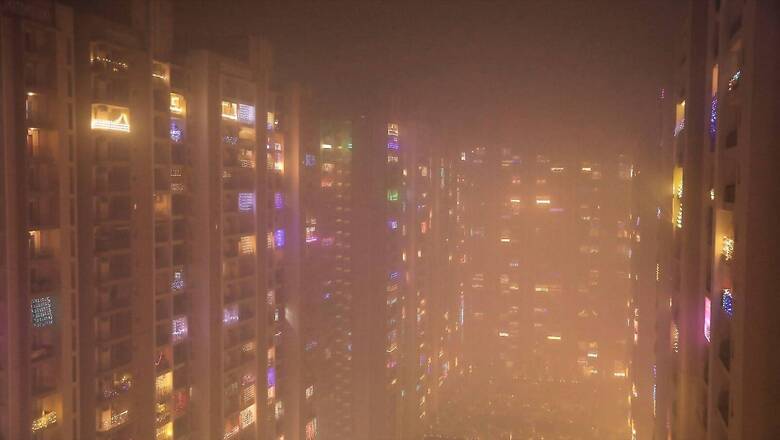
views
It’s that time of the year again. As the Capital struggles to breathe due to air pollution and a blanket of smog enveloping the skyline, Delhiites — already masked up because of the deadly coronavirus — are making changes to their lifestyle to escape the clutches of the annual, unwelcome guest.
On Saturday morning, the overall air quality in Delhi was recorded in the “severe” category with an Air Quality Index (AQI) of 499 at 7:35am, according to the System of Air Quality Weather Forecasting Research (SAFAR). On Friday at 4pm, the AQI in the national capital was 471 due to over 4,000 farm fires, which played a major role in deteriorating the air quality levels across the Delhi-NCR.
A sub-committee on Graded Response Action Plan (GRAP) said meteorological conditions will be highly unfavourable for dispersion of pollutants till November 18 and agencies concerned must be fully ready to implement measures under ’emergency’ category.
The city has recorded severe air quality on six of the last eight days after Diwali. According to an analysis by the Delhi Pollution Control Committee (DPCC), people in the national capital breathe the worst air between November 1 and November 15 every year.
Faridabad (460), Ghaziabad (486), Greater Noida (478), Gurugram (448) and Noida (488) also recorded severe air quality at 4 pm. An AQI between zero and 50 is considered “good”, 51 and 100 “satisfactory”, 101 and 200 “moderate”, 201 and 300 “poor”, 301 and 400 “very poor”, and 401 and 500 “severe”.
According to the Central Pollution Control Board (CPCB), the 24-hour average concentration of lung-damaging fine particles known as PM2.5 in Delhi-NCR crossed the 300 mark around midnight and stood at 381 micrograms per cubic metre at 4 pm (Friday), more than six times the safe limit of 60 micrograms per cubic metre. The PM10 level was recorded at 577 micrograms per cubic metre.
Here’s how you can save yourself from the Capital’s hazardous air quality:
• Limit exposure to the smog. Use a scarf to cover your neck and wear sunglasses to protect your eyes from burning. Wearing masks is also important to prevent your lungs from being damaged by the smog. The smog is heavier early morning or evening so it is advisable to limit your outdoor activities then.
• Stay hydrated. Smog is usually dense when the humidity is high and in such conditions, it is important to drink fluids during exercising and before and after that.
• Do your bit to curb air pollution. Travel using public transportation or carpool to avoid adding to the hazardous air.
• People who have lung issues like asthma, the elderly and children must take special care to not strain themselves and limit their exposure to the smog.
• Check the AQI in your locality.
• Plan your diet since oily and junk food can create additional stress in your body when dealing with the hazardous smog.
• To avoid indoor air pollution, make sure there is a chimney in the kitchen and an exhaust in the bathroom. This will ensure that the air is recirculated.
• Open your windows and doors between 3 pm – 5 pm and allow the air to circulate. On a bright sunny day, this is the time slot when concentration of PM 2.5 is the lowest in the air.
Read all the Latest India News here

















Comments
0 comment